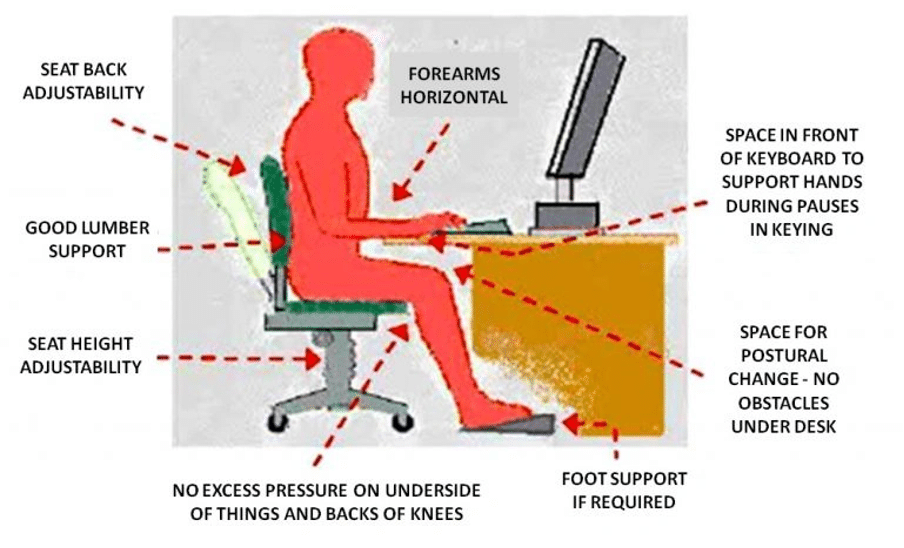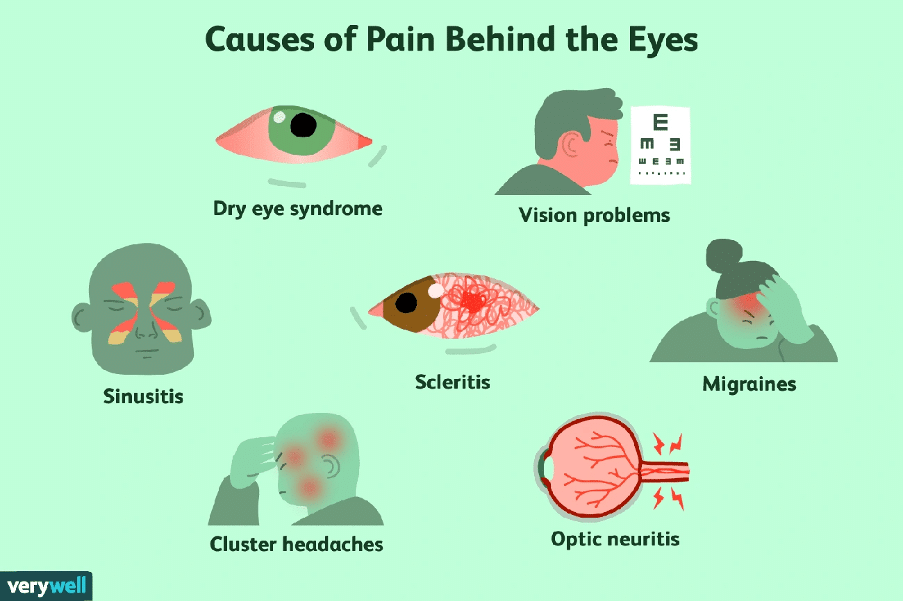Headaches after extended reading or screen time might feel familiar to you. Vision-related headaches are more common than most people realise. Statistics show that 150 million Americans need corrective eyewear for refractive errors, which demonstrates how systemic vision problems are.
Your eyes weren’t designed to focus on small areas for long periods. The constant strain builds up pressure and causes fatigue over time. This connection between poor eyesight and headaches affects many people every day. Laser eye surgery provides a promising solution with remarkable outcomes. Research shows that 95 percent of laser eye surgery patients achieve improved visual acuity to 20/40 or better. These improvements can eliminate the strain that causes persistent headaches.
This piece examines vision problems’ contribution to headaches and identifies the specific conditions behind them. You’ll learn how laser eye surgery could be your solution to these issues. The procedure takes just 15 minutes for both eyes and provides the quickest recovery among all laser vision treatments.

How poor eyesight can lead to headaches
Your eyesight and headaches share a deeper connection than most people think. This link helps explain how poor eyesight causing headaches might affect your daily life.
Eye strain and muscle fatigue
Ciliary muscles wrap around your eyeballs to help you focus and position your eyes. These muscles work extra hard if you have vision problems. Like lifting weights for too long, your eye muscles get tired during long periods of intense focus. Eyes work much harder than they should when they can’t create clear images because of vision problems. The extraocular muscles get exhausted from this extra work. This strain gets worse especially when you:
- Read for long periods
- Look at computer screens
- Use your phone or tablet
- Drive for many hours
Your muscles get tired from this constant effort and the discomfort shows up as headaches.

The link between blurred vision and tension headaches
Headaches from vision problems usually feel like tension headaches – a dull pain behind or around your eyes. The area feels sore and tired after visual tasks. Your facial and eye muscles can cramp up from squinting too long, which adds to these headaches.
Your brain can’t handle seeing double images, so it works hard to merge misaligned images into one clear picture. This overwork tyres your brain and turns into real pain. People who can’t see well often lean forward or tilt their head without realising it. This poor posture creates neck and shoulder tension that makes headaches worse.
When to suspect your eyesight is the cause
These signs point to vision-related headaches:
- Pain starts after hours of screen time or reading
- You feel pain around your temples or front of your face
- Headaches come with blurry vision or dry eyes
- The pain gets better after you rest your eyes
Eye strain headaches don’t hurt as much as migraines or cluster headaches. Frequent squinting, tired eyes, or extra sensitivity to light might mean your vision needs attention. Most headaches don’t come from eye strain. Vision problems like nearsightedness, farsightedness, or astigmatism can stress your eyes enough to cause regular headaches. The good news? These headaches usually stop once you fix the vision problem – that’s why laser eye surgery works so well as a long-term fix.
Common vision problems that may trigger headaches
Vision conditions can trigger persistent headaches through different mechanisms. Learning about these problems helps you identify whether eyesight causing headaches affect your daily life.
Nearsightedness (Myopia)
Your eye’s length or cornea’s steep curve causes nearsightedness, which makes distant objects appear blurry. This condition affects many people worldwide and develops during childhood and adolescence. People with myopia get headaches from constant squinting and eye strain as they try to focus on distant objects. The pain ranges from dull aches to throbbing sensations around the brow area and often gets worse after activities like driving or watching television. The squinting narrows the palpebral fissure and creates a pinhole effect to see more clearly.
Farsightedness (Hyperopia)
A shorter than normal eyeball or less curved cornea leads to farsightedness. People with this condition strain their eyes most while looking at nearby objects. Their eyes work constantly to maintain focus through excessive accommodation that causes eye fatigue and headaches. Many people don’t realise they’re farsighted because their eyes compensate for the condition at first. This creates ongoing strain that triggers headaches they don’t immediately connect to vision problems. These headaches show up after long reading sessions or computer work.
Astigmatism
Your cornea’s irregular shape, which looks more like a rugby ball than a football, causes astigmatism. Light can’t focus evenly on your retina because of this irregular curvature that blurs vision at all distances. The most important symptoms include blurred vision, headaches, and eye strain—especially when you have to concentrate for long periods. Research shows that low-amount astigmatism with against-the-rule orientation causes worse headaches than higher amounts. This happens because your eyes keep making unconscious efforts to fix smaller defects. Your ciliary muscles’ constant irregular contractions contribute directly to headache development.
Presbyopia
The eye’s lens becomes less flexible with age, making it hard to focus on close objects. This natural ageing starts around 40 and gets worse until your mid-60s. You might notice blurred vision at normal reading distance, need more light to read, and get headaches from close work. Presbyopia can cause eye strain, headaches, and visual fatigue even if you see well up close. The condition affects over 111 million American adults and remains one of the biggest sources of headaches in middle-aged and older populations.

How laser eye surgery helps relieve headache symptoms
Laser eye surgery is a great way to help people who suffer from eyesight causing headaches. Research continues to show strong links between vision correction and headache relief. Many patients see major improvements after their treatment.
Correcting refractive errors
Laser eye surgery reshapes your cornea to fix common vision problems like nearsightedness, farsightedness, and astigmatism. The surgery changes your cornea’s shape forever, which helps light focus correctly on your retina. This fix removes one of the main triggers for headaches. A newer study, published by researchers using topography-guided photorefractive keratectomy, found that 15 out of 24 patients no longer had headaches. The other patients felt much better too – their headache frequency dropped from 4.4 to 0.5 days each week.
Reducing eye strain and visual fatigue
Bad vision makes your eyes work too hard and causes fatigue and headaches. Patients say their eyes feel less tired throughout the day after laser surgery. Take Emily’s case at London Vision Clinic – she had a very low prescription, but her astigmatism gave her constant headaches and migraines. Her migraines went away completely after laser eye surgery. Another study showed that headache duration dropped from 108.5 minutes to just 34.4 minutes after the surgery.
Improving focus and reducing squinting
People with poor vision often squint, which strains face muscles and leads to tension headaches. Laser eye surgery removes the need to squint, so muscle strain decreases. Studies show patients needed pain medication only 0.6 days per week instead of 2.4 days after vision correction surgery. Yes, it is true that 61% of patients stopped taking pain relief completely.
Minimising dependency on glasses or contacts
Glasses and contact lenses can sometimes cause discomfort and headaches. Glasses might create pressure points, and poorly fitting contacts can strain your eyes. Laser eye surgery helps you avoid these headache triggers by reducing or eliminating the need for corrective eyewear.
Tired of vision-related headaches disrupting your life? At Precision Vision London, our advanced laser eye surgery can fix the vision issues that cause your headaches.
Quality-of-life scores improve by a lot after laser vision correction. Patients report an impressive 82% improvement in both how often they get headaches and how bad those headaches are.
What to expect from the procedure and recovery
Knowledge about laser eye surgery’s before, during, and after phases helps reduce concerns for people who think about this solution to eyesight causing headaches. Here’s what you should expect during the whole ordeal.
How the surgery is performed
The laser eye surgery procedure typically takes about 30 minutes for both eyes. Your eyes become numb with anaesthetic drops that eliminate pain during the procedure. A small device called a lid speculum holds your eyelids open throughout the surgery.
The surgeon creates a thin flap in your cornea with a laser or small blade during LASIK procedures. The surgeon lifts the flap and uses another laser to reshape your cornea, which corrects your vision. You’ll need to focus on a fixed light that keeps your eye positioned correctly. The surgeon then places the flap back into position where it heals naturally without stitches.
Is the procedure painful?
Laser eye surgery causes virtually no pain during the actual procedure because of the numbing drops. The sensation feels like wearing tight swimming goggles when the surgeon creates the corneal flap. This pressure only lasts 30-40 seconds. You might experience mild discomfort for about 4-6 hours once the anaesthetic wears off. Some patients feel a burning or gritty sensation that feels like something in their eye. LASIK procedures cause less post-operative pain than surface laser treatments like LASEK.
Recovery timeline and aftercare
Your vision becomes foggy right after surgery, like looking underwater. Vision improves within hours and continues getting better over time. Most patients can drive after just 24 hours following LASIK. Your doctor will prescribe eye drops to prevent infection and manage inflammation during recovery. Protective eye shields become necessary while sleeping for the first week to protect the healing cornea. The first follow-up visit happens 24-48 hours after surgery, and regular check-ups continue for about six months.
Possible side effects and how to manage them
Dry eyes, light sensitivity, and seeing halos around lights are common temporary side effects. Dry eyes remain the most frequent complication that typically lasts about a month. Prescribed lubricating drops help manage this discomfort effectively. Patients should avoid rubbing their eyes, swimming, or using cosmetics around their eyes for at least two weeks during recovery. Contact sports should wait for at least a month. Contact your doctor immediately if you experience severe pain or worsening vision instead of improvement – these symptoms could indicate rare complications that need prompt attention.
Conclusion
Poor vision can make your daily life miserable with constant headaches. Many people don’t realise their eye strain leads to these recurring headaches. Research shows a clear link between these two problems. Laser eye surgery has proven to be an excellent solution. Many patients report their headaches completely disappear, while others see them happen much less often.
The surgery itself doesn’t hurt much and you’ll recover quickly. You can start driving just 24 hours after LASIK. Your vision starts getting better right away. Then your eyes won’t have to work so hard, which stops the strain that brings on those nagging headaches.
Better vision and headache relief are just one step away. You should book your consultation today to start your trip toward clear, pain-free vision. This change could transform your life. Patients tell us they not only see better but also get fewer headaches. They don’t need pain medicine as much and don’t have to deal with uncomfortable glasses or contact lenses anymore.
Millions worldwide struggle with headaches from poor eyesight. Without doubt, fixing the root cause through laser eye surgery works better than just treating symptoms. You should think over this option if visual tasks keep giving you headaches. The results show substantial improvements in both vision and headache frequency.
Modern laser eye surgery techniques can fix myopia, hyperopia, astigmatism, or presbyopia. So this eliminates what’s triggering your headaches. Patient success stories are a great way to get why this solution makes sense. It’s perfect for anyone who’s tired of vision-related headaches getting in the way of their daily life.
Key Takeaways
Understanding the connection between vision problems and headaches can help you identify when poor eyesight might be the root cause of your discomfort, leading to effective treatment solutions.
- Poor eyesight forces eye muscles to work overtime, creating strain that manifests as tension headaches around temples and behind eyes
- Common vision problems like myopia, hyperopia, astigmatism, and presbyopia all trigger headaches through different strain mechanisms
- Laser eye surgery corrects refractive errors permanently, with studies showing 15 out of 24 patients experiencing complete headache resolution
- The procedure takes just 30 minutes for both eyes with minimal pain and most patients can drive within 24 hours
- Post-surgery, patients report 82% improvement in headache frequency and severity, with many stopping pain medication entirely
If you frequently experience headaches after reading, computer work, or other visual tasks, your vision might be the underlying culprit. Laser eye surgery offers a permanent solution that addresses the root cause rather than just managing symptoms, providing lasting relief from both vision problems and associated headaches.
FAQs
Q1. Can poor eyesight really cause headaches? Yes, poor eyesight can indeed cause headaches. When your eyes strain to focus due to uncorrected vision problems, it can lead to eye fatigue and tension headaches, particularly after prolonged visual tasks like reading or screen time.
Q2. How does laser eye surgery help with headaches? Laser eye surgery can help reduce headaches by correcting refractive errors in your vision. This eliminates the need for your eyes to strain, reducing eye fatigue and the associated headaches. Many patients report significant reduction or complete resolution of their headaches after the procedure.
Q3. Is laser eye surgery painful? The laser eye surgery procedure itself is virtually painless due to anaesthetic eye drops. You may feel slight pressure briefly during the creation of the corneal flap. After surgery, mild discomfort for 4-6 hours is common, but severe pain is rare.
Q4. How long is the recovery period after laser eye surgery? Recovery time varies, but most patients notice significant vision improvement within hours. Typically, you can resume driving within 24 hours after LASIK. Full recovery and stabilisation of vision may take a few weeks to months, with regular check-ups for about six months.
Q5. What are the common side effects of laser eye surgery? Common temporary side effects include dry eyes, light sensitivity, and seeing halos around lights. Dry eyes are the most frequent complication, usually lasting about a month. These effects can be managed with prescribed eye drops and typically resolve as your eyes heal.
Authors & Reviewer
-
 Olivia: Author
Olivia: AuthorHi, I'm Olivia, a passionate writer specialising in eye care, vision health, and the latest advancements in optometry. I strive to craft informative and engaging articles that help readers make informed decisions about their eye health. With a keen eye for detail and a commitment to delivering accurate, research-backed content, I aim to educate and inspire through every piece I write.
-
 Dr. CT Pillai: Reviewer
Dr. CT Pillai: ReviewerDr. CT Pillai is a globally recognised ophthalmologist with over 30 years of experience, specialising in refractive surgery and general ophthalmology. Renowned for performing over 50,000 successful laser procedures.

